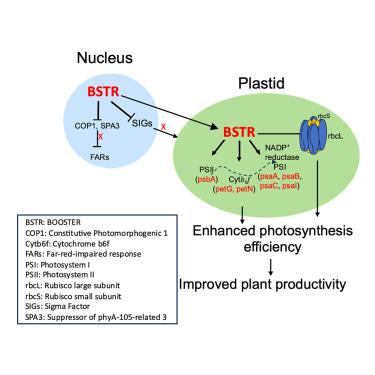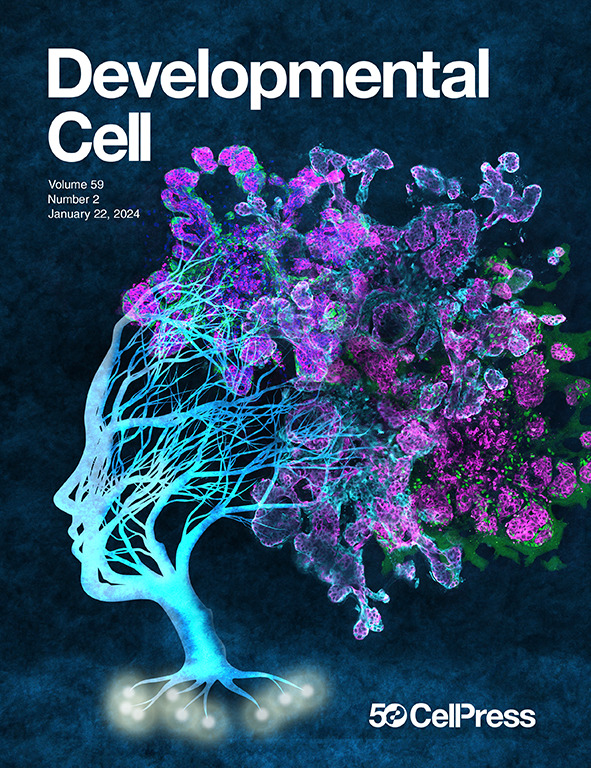孤儿基因BOOSTER提高光合效率和植物生产力
IF 10.7
1区 生物学
Q1 CELL BIOLOGY
引用次数: 0
摘要
细胞器到细胞核的DNA转移在真核生物的进化过程中起着重要作用。本文通过对743份毛杨材料的非光化学猝灭参数的全基因组关联研究(GWAS)发现了一个与波动光下光合作用变异相关的核编码基因组区域。所鉴定的基因BOOSTER (BSTR)包括三个外显子,其中两个具有明显的内生起源,第三个包含一个大片段的质体编码Rubisco大亚基。BSTR的高表达促进了核质体间的顺行信号传导,与Rubisco的表达增强相对应,增加了光合作用,在田间条件下,杨树株高增加35%,生物量增加88%。BSTR在白杨中过表达,株高可达200%。同样,异源表达BSTR的拟南芥植株的生物量增加了200%,种子增加了50%。本文章由计算机程序翻译,如有差异,请以英文原文为准。

An orphan gene BOOSTER enhances photosynthetic efficiency and plant productivity
Organelle-to-nucleus DNA transfer is an ongoing process playing an important role in the evolution of eukaryotic life. Here, genome-wide association studies (GWAS) of non-photochemical quenching parameters in 743 Populus trichocarpa accessions identified a nuclear-encoded genomic region associated with variation in photosynthesis under fluctuating light. The identified gene, BOOSTER (BSTR), comprises three exons, two with apparent endophytic origin and the third containing a large fragment of plastid-encoded Rubisco large subunit. Higher expression of BSTR facilitated anterograde signaling between nucleus and plastid, which corresponded to enhanced expression of Rubisco, increased photosynthesis, and up to 35% greater plant height and 88% biomass in poplar accessions under field conditions. Overexpression of BSTR in Populus tremula × P. alba achieved up to a 200% in plant height. Similarly, Arabidopsis plants heterologously expressing BSTR gained up to 200% in biomass and up to 50% increase in seed.
求助全文
通过发布文献求助,成功后即可免费获取论文全文。
去求助
来源期刊

Developmental cell
生物-发育生物学
CiteScore
18.90
自引率
1.70%
发文量
203
审稿时长
3-6 weeks
期刊介绍:
Developmental Cell, established in 2001, is a comprehensive journal that explores a wide range of topics in cell and developmental biology. Our publication encompasses work across various disciplines within biology, with a particular emphasis on investigating the intersections between cell biology, developmental biology, and other related fields. Our primary objective is to present research conducted through a cell biological perspective, addressing the essential mechanisms governing cell function, cellular interactions, and responses to the environment. Moreover, we focus on understanding the collective behavior of cells, culminating in the formation of tissues, organs, and whole organisms, while also investigating the consequences of any malfunctions in these intricate processes.
 求助内容:
求助内容: 应助结果提醒方式:
应助结果提醒方式:


